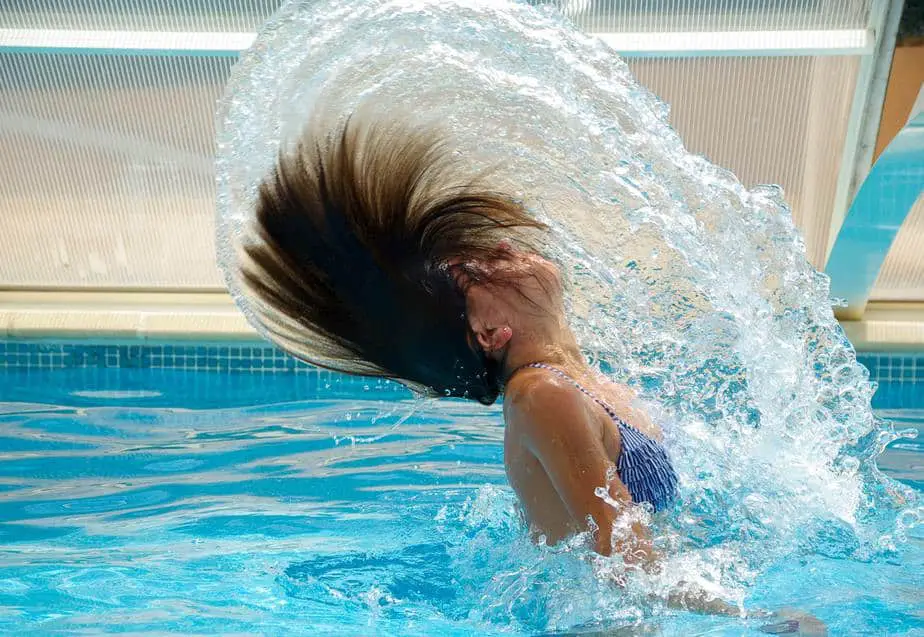Swimming is a low-impact way to exercise and can be done year-round, and so it’s no wonder that there are enthusiasts that want to swim everyday.
Unfortunately, whether you’re swimming indoors or outdoors, chemicals or salt in the water can dry out your hair, cause it to fade in color, and otherwise damage it. While the health benefits that swimming provides is undeniable, so are its harmful effects on your hair.
When you’re swimming outdoors, there are even more harmful effects to worry about – the sun’s UV rays, bacteria getting into your ears and eyes, skin irritation, and much more. Swimming indoors is much safer, but that still leaves the problem of how it can damage your hair.
Thankfully, there are tips you can follow to protect your hair. You could first pre-rinse your hair so that it can be saturated and not absorb as much chlorine or salt. Wearing a swim cap can limit the amount of water your hair is exposed to, and can protect your hair from UV rays when outdoors. You can also use products after your swimming session to help revitalize your hair.
In this article, we will discuss in greater detail the most common ways in which swimming everyday can damage your hair, and the steps you can take to protect your hair from this damage when swimming everyday.
Why is swimming everyday bad for your hair?
In general, swimming is bad for your hair because it can strip your hair of its natural protective oils, which increases the likelihood of it drying out and cracking. However, there are many more downsides which we will cover below.
Chlorine
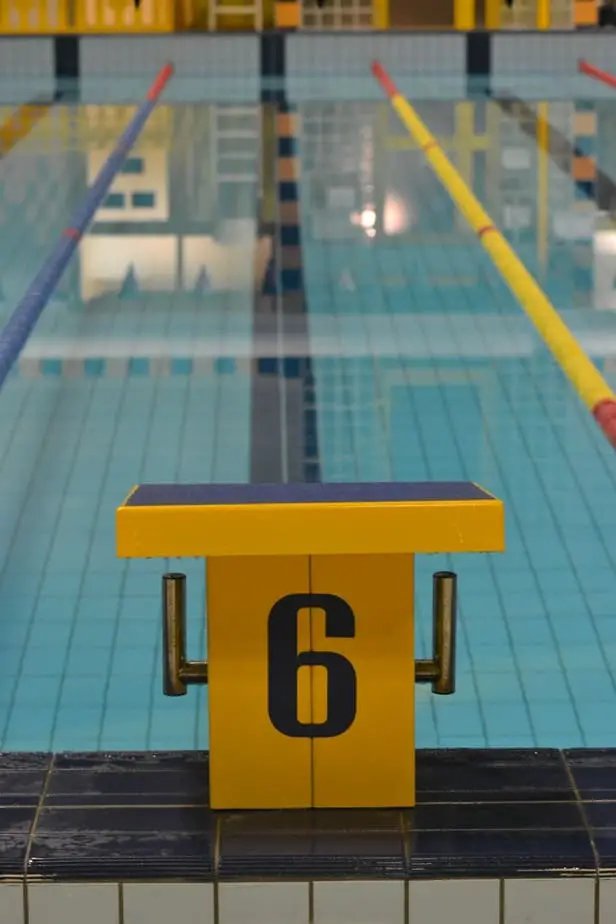
Chlorine gets a bad rap. You will often hear people complaining that they hate the smell of chlorine and that it irritates their eyes, skin, or other body parts. Fair enough.
Hate it all you want, but chlorine isn’t going anywhere as it is a necessary evil in swimming pools. It is needed because it kills the most harmful bacteria that can sometimes be found in water such as E. Coli and salmonella.
When swimming outdoors, you have an increased risk of developing swimmer’s ear (ear infection), stomach viruses, eye infection (pink eye), or various other ailments from the bacteria found in water.
Compared to the side effects that these ailments would give you, I think you would much rather deal with the downsides of chlorine, one of which is potential hair damage.
Since chlorine is so effective at removing harmful substances, it has the side effect of stripping off the natural oils in your hair, causing your hair to be dry and brittle. Depending on your hairstyle, it can even strip off any product you were wearing, cause your hair color to fade, and weaken the hair strands altogether.
If you swim infrequently, this is not a big issue because your hair will naturally produce more oils and you can reapply your hair products. The main issue, as it pertains to this article, is when you swim everyday and expose your hair to this chemical constantly. Then, you will start to experience the downsides of chlorine.
Salt
When swimming outdoors, there’s a fairly good chance you will be swimming in a saltwater body of water. Without the protection of chlorine, saltwater has a significantly higher chance of causing infections (eyes, ears, etc). However, the issue we are focusing on in this article is how it can damage your hair.
As mentioned, water can strip off some of the oil from your hair even without chlorine. This factor alone can cause your hair to dry out, especially if you are swimming everyday.
However, saltwater makes things even worse because, as the name suggests, it is filled with salt. Salt is extremely effective at absorbing moisture away from you, which is why there is the saying “drinking saltwater makes you thirstier”.
So swimming in saltwater leads to a one-two punch of 1) water removing the natural oils in your hair, and 2) salt absorbing moisture from your hair, the end result being your hair will be extremely dry and brittle.
UV rays

As if swimming in saltwater isn’t bad enough, hair damage can be further compounded by exposure to the sun’s UV rays. If you are swimming in an outdoor pool filled with chlorinated water, don’t think you’re safe. Your hair may bear the brunt of the damage by protecting the top of your head from sunburn, but what is protecting your hair?
To give you an idea of how strong UV rays are, have you ever left something in direct sunlight for a prolonged period of time? A piece of furniture, some clothing, or a plastic item of some sort? You might have noticed that its color has faded, and its integrity has become very weak. That is the power of UV rays, and it can do the same to your hair.
So the next time you go swimming outdoors (whether in an outdoor pool or in saltwater), consider how much damage the sun shining down on your hair is causing, in addition to the salt/chlorine in the water.
How to protect your hair from damage
Pre-rinse your hair
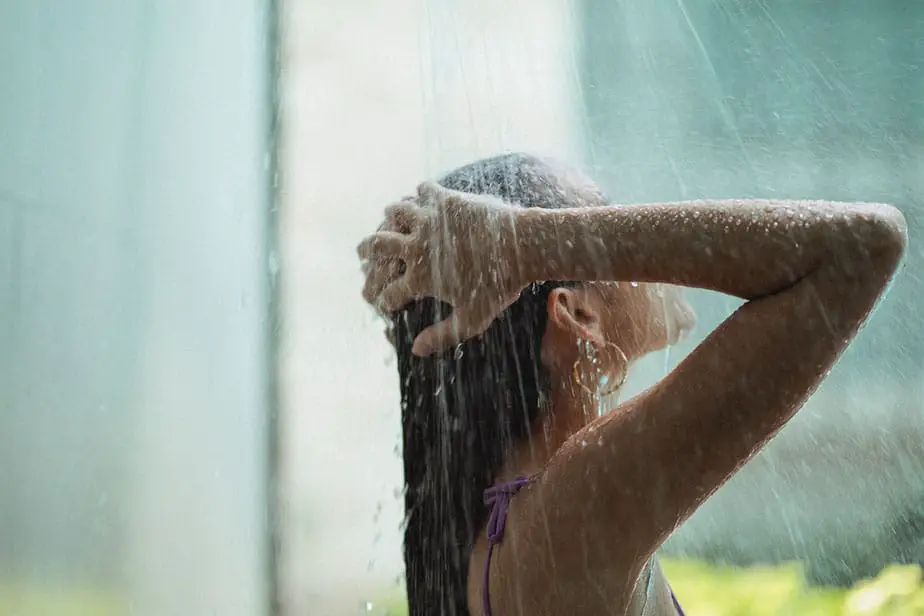
This tip might seem like a contradiction to what we said above regarding how water strips your hair of its natural oils, but trust us on this!
If you didn’t know, hair is very absorbent; it can absorb as much as 30-50% of its weight in water. So if you know you will be entering chlorinated water or saltwater, instead of letting your hair absorb that much “bad” water, why not first let it absorb some fresh water instead?
Thankfully, if you are showering before entering the pool as you should be doing, then you have been unknowingly protecting your hair all this time. When your hair is saturated with fresh water, it will limit how much salt and chlorinated water gets absorbed, and that will keep it from drying out as much.
With that said, there is still the issue of hair contracting as it dries which can also result in damage over time, but it’s the lesser of two evils. Plus, this tip requires almost no extra effort on your part, is free to do, and can be done in conjunction with the other tips below. It’s basically a no-brainer to follow this tip!
Wear a swim cap
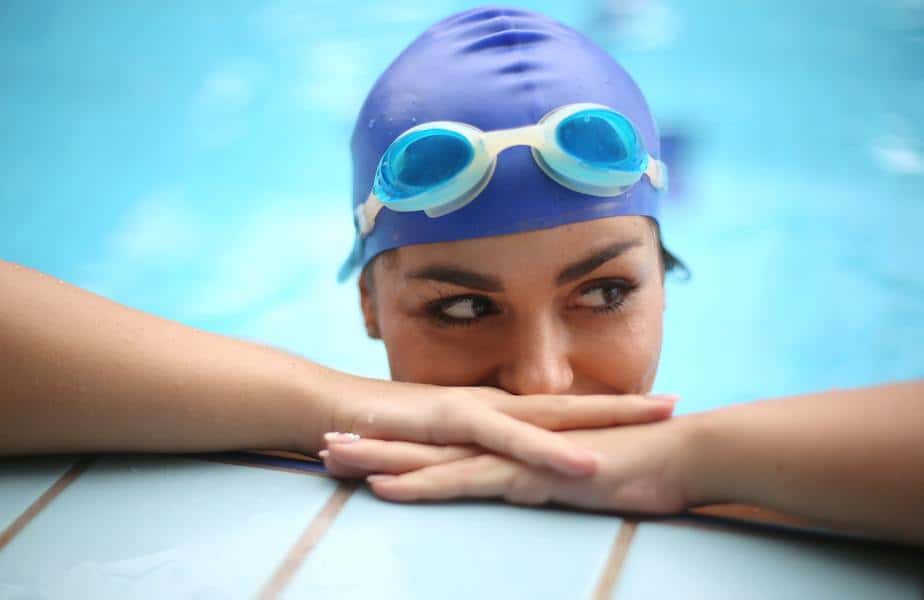
Swim caps are most often worn by competitive swimmers to improve their hydrodynamics and reduce drag underwater. It does this by keeping your hair packed down so that it’s not floating everywhere or getting in your face.
Since a swim cap will cover your hair, it shouldn’t be surprising that it can protect your hair. That said, people often make the wrong assumption that swim caps can keep your hair dry. They can’t; some water will still make it under the swim cap.
However, the point is that swim caps can limit how much water reaches your hair and even how much water reaches your ears. Combine wearing a swim cap with pre-rinsing your hair, and you will have much healthier hair.
Another way that swim caps protect your hair is when you are swimming outdoors. Remember that your hair is protecting your scalp from getting sunburned, but nothing is protecting your hair from the sun’s UV rays! That is, unless you are wearing a swim cap.
There are many more advantages of wearing a swim cap, such as improved visibility in open waters and keeping your hair from shedding into a swimming pool, and so on. You can read more about why swim caps are such essential gear for swimmers in this article.
You’ll notice that many of these benefits are so useful whether you have long hair, short hair, or you are completely bald. Thus, it doesn’t matter if you’re a guy or girl, you should probably wear a swim cap anyways.
Use conditioners
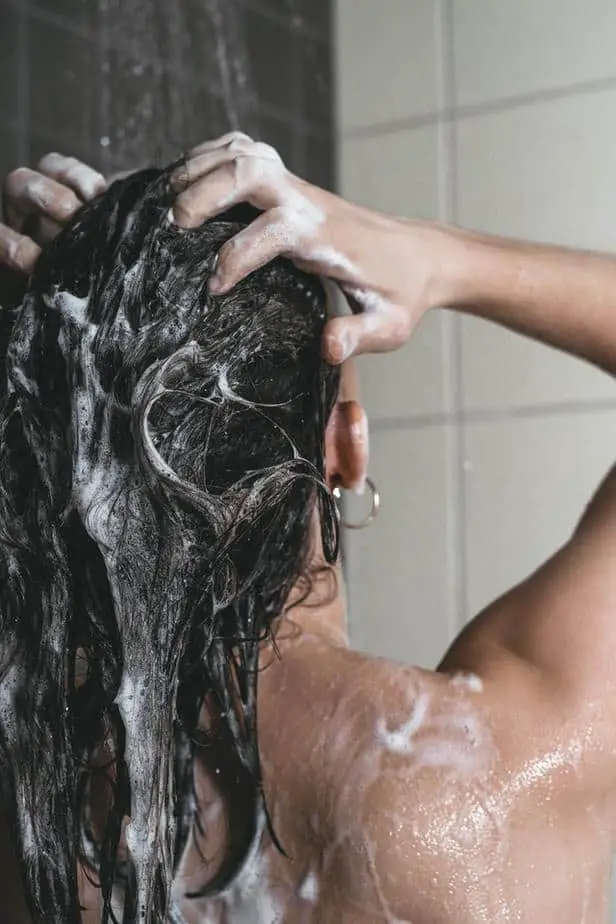
Swimming everyday will remove your hair of its natural oils, leaving it dry. Ironically, this is also what shampoo does even though you might think that shampoo is good for your hair. That’s why experts recommend using conditioner after using shampoo, and you should also use conditioner after swimming.
Conditioners can protect your hair by moisturizing it and adding back a protective layer of oil. Now, not all conditioners are equally effective, however I’ve found that leave-in conditioners such as this work extremely well. Read the instructions carefully to ensure you’re getting the most benefit out of this product.
Some people even recommend applying conditioner after pre-rinsing (and before entering the water) because the water from pre-rinsing can already start to strip your hair of its natural oils. Replenishing your hair’s oils with conditioner can help give it some much needed protection.
Do these steps in conjunction with wearing a swim cap, and you will be well on your way to having healthy, luscious hair again despite swimming everyday.
Use oils
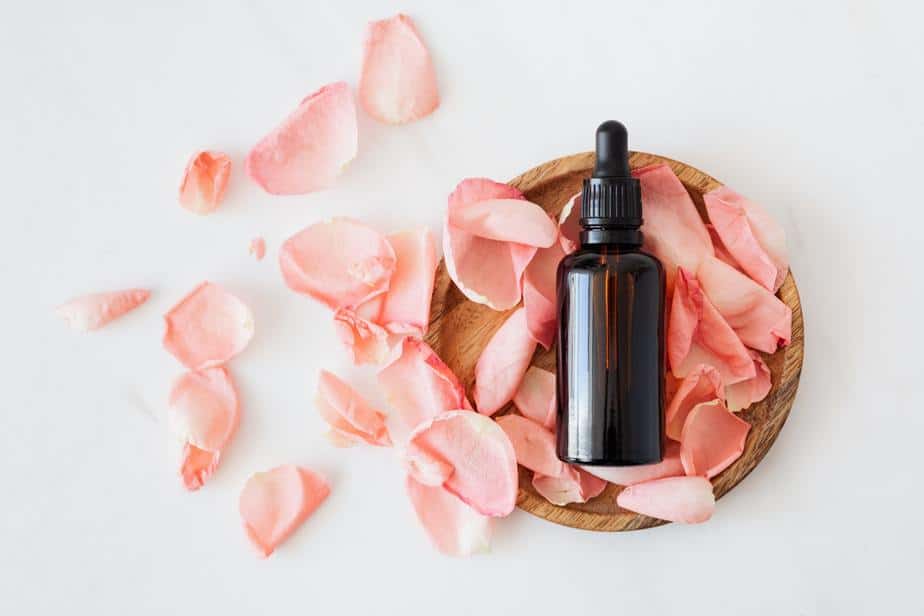
Like conditioners, you can apply natural oils directly to your hair to replenish the oils that were stripped off while swimming. You could use oils instead of conditioner, or you could use it in addition to using conditioner.
Applying oils is just like applying conditioner. The best times to apply them are after your pre-rinse (and before entering the water) and after exiting the water after you’ve rinsed your hair. Applying it before entering the water will create a protective barrier between your hair and the water, and applying it afterwards replenishes the oil lost.
Searching the web will lead to many results on which oils people use. From our research, we found a couple of oils that kept coming up: coconut oil or jojoba oil. Personally, I just use conditioners, but you can give these a try and see how it works for you.
Everyone’s hair reacts differently to products, and everyone’s hair is unique. We cannot guarantee that these products will work for you, but if you are able to get testers or sample sizes (or just buy the smallest size) so you can give them a try with minimal investment. After trying them, you can be sure what works best for your hair.
Braid your hair
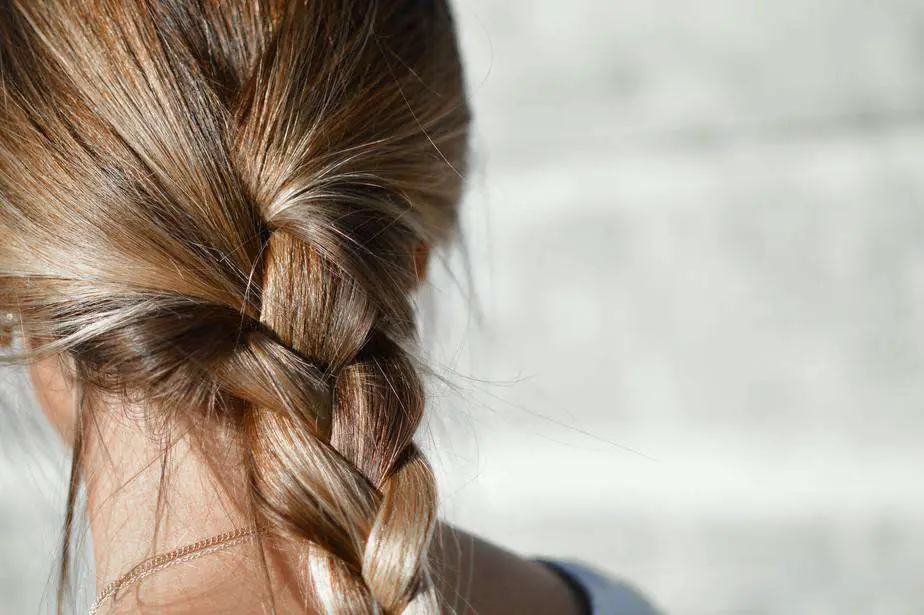
Those of you with longer hair, there’s more you can do to protect your hair other than wearing a swim cap. A common problem people have with swim caps is that they have trouble with the cap pulling on their hair and getting tangled up. It’s quite a hassle to deal with after the swim cap is taken off.
One way to reduce the chances of tangled hair is to braid your hair. Braided hair is stronger thanks to being bound, making it more durable and unlikely to be damaged. It will also be a lot easier to detangle and is unlikely to get tangled in the first place.
After swim hair care
Wash immediately after swimming
Pre-rinsing your hair before swimming only limits the damage that chlorine does to your hair. After swimming, it is imperative that you at least wash your hair afterwards. This can help wash off the chlorine that is in your hair and replenish any lost moisture. Leaving chlorine in your hair overnight will cause you to wake up with dry, dull, and lifeless hair in the morning.
Time is of the essence, so if there is a shower by your local pool or beach, then be sure to use it. The longer you leave your hair exposed to the wind (after having its oils stripped off), the more your hair will be dried out.
While you are generally not recommended to use shampoo after leaving the pool (for reasons we have already discussed), there are some special shampoos designed to strip the chlorine from your hair, such as this product. They are known as clarifying shampoos, and they “reset” your hair back to their state before you got into the pool.
Hydrate with conditioner
Even better than simply rinsing your hair after swimming is to use leave-in conditioner as well. We have already discussed the benefits of using conditioners both before you swim and now afterwards.
This might seem like a pain in the butt, but if you are aggressively stripping your hair of its natural oils and exposing it to chlorine by swimming everyday, you need to take drastic measures to protect them.
After using clarifying shampoo, your hair will need the moisture and nourishment that conditioners can provide.
Detangle your hair
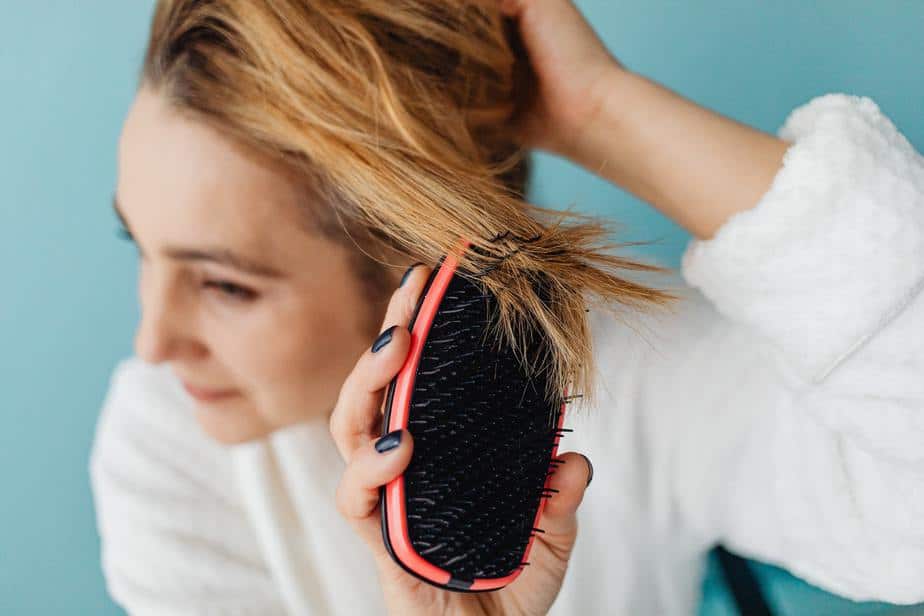
When your hair is left floating in the water, individual strands can wrap around each other and get tangled up. That is why after swimming, aside from rinsing your hair, you should also detangle your hair.
Tangled hair can break easily when detangling, and it will also feel very painful if your comb gets caught on it. To reduce how painful and difficult it is to detangle your hair, consider using hair detangler before brushing to make the process smoother.
Parting words
In order to protect your hair, you need to know what to avoid (chlorine, salt, UV rays) and how to handle them. When you’re swimming everyday, your hair is going to get all of its natural oils stripped off, causing it to dry out and become limp and dull.
Over time, your hair will become brittle and weak. If you are someone that likes to dye your hair and put your hair through luxurious treatments, know that it’s not compatible with a lifestyle where you are swimming everyday. After dyeing your hair, expect to take up to a week off from swimming, otherwise the colors will fade from your hair.
The chlorine will cause your hair color to fade and frustrate the efforts of any hair stylist. At the very least, you must ensure your hair stays moisturized and healthy, and there are a few ways to do so.
Remember that prior to swimming, you should be pre-rinsing your hair. If you want, you can also apply conditioner or natural oils to create a protective layer around your hair.
During swimming, you can braid your hair or tie it in in a bun and wear a swim cap over it to limit how much water your hair is exposed to. Swim caps provide many benefits beyond this, but we’ll save that for another article.
Finally, after swimming, remember to rinse your hair again, use chlorine-removing shampoo to get rid of lingering chlorine, and reapply any conditioner or natural oils to moisturize your hair and restore the protective layer of oil that is normally around your hair.
If you are aware of the causes of dry, brittle hair, and you are applying the steps to protect your hair from these nasties, then you will have healthy, vibrant hair even if you are swimming everyday.
Last update on 2024-07-13 / Affiliate links / Images from Amazon Product Advertising API

